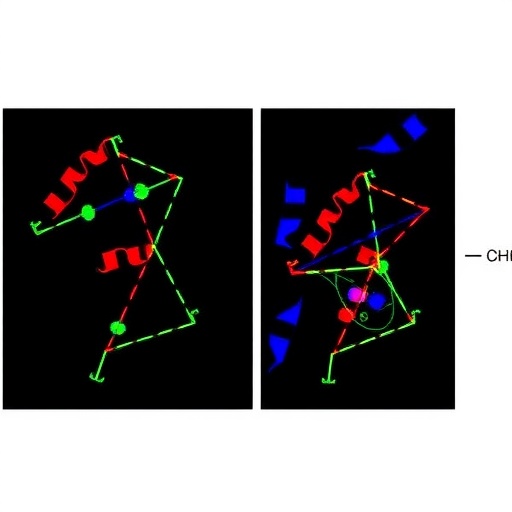In recent years, mitochondrial calcium homeostasis has emerged as a pivotal mechanism underlying the metabolic vitality and functional integrity of excitable tissues such as the heart and brain. The delicate balance of calcium ions within mitochondria is instrumental for orchestrating ATP production, modulating cell signaling, and ultimately preserving cellular and organ-level homeostasis. A breakthrough study has now illuminated a heretofore obscure regulator of this balance: TMEM65, an inner mitochondrial membrane protein that potentiates the activity of the mitochondrial sodium-calcium exchanger, NCLX. These findings represent a significant stride in understanding mitochondrial calcium dynamics and open promising therapeutic avenues for a spectrum of diseases rooted in mitochondrial dysfunction.
Mitochondrial calcium uptake is well recognized as a central orchestrator of cellular energy metabolism, coordinating the tricarboxylic acid cycle and ATP synthesis with cytosolic calcium signals. However, the efflux of calcium from the mitochondrial matrix is equally critical to prevent calcium overload, which can lead to mitochondrial depolarization, reactive oxygen species generation, and activation of cell death pathways. NCLX has been identified as the principal efflux route for mitochondrial calcium in excitable tissues, mediating a sodium-dependent calcium export essential for maintaining calcium homeostasis. Despite its significance, the molecular regulation of NCLX function has remained elusive.
Utilizing the innovative technique of proximity-dependent biotinylation coupled with high-resolution proteomics, researchers have now identified TMEM65 as a novel binding partner of NCLX embedded in the inner mitochondrial membrane. This technological approach enabled the mapping of protein-protein interactions in close spatial proximity to NCLX, revealing TMEM65 as a key collaborator in mitochondrial calcium efflux. TMEM65’s role is not merely structural; it actively enhances NCLX-mediated sodium-dependent mitochondrial calcium extrusion, underscoring its functional importance in calcium dynamics.
The mechanisms underpinning TMEM65’s regulatory influence on NCLX were dissected through a combination of pharmacological inhibition and genetic ablation experiments. Acute blockade of NCLX activity pharmacologically or complete genetic knockout effectively abolished TMEM65’s capacity to increase mitochondrial calcium efflux, demonstrating a strict mechanistic interdependence. This functional coupling suggests that TMEM65 does not independently mediate calcium flux but rather acts as an essential facilitator or modulator of NCLX function, perhaps by affecting its conformational dynamics or membrane localization.
Significantly, loss-of-function studies cemented TMEM65’s indispensability in NCLX-dependent calcium efflux. Silencing TMEM65 expression impaired sodium-dependent mitochondrial calcium export, leading to pathologically elevated mitochondrial calcium levels. These perturbations in mitochondrial calcium homeostasis were not inconsequential; they precipitated cellular dysfunction and vulnerability to injury, particularly in tissues with high energy demands and calcium fluxes such as cardiac and skeletal muscle.
Correlative in vivo studies in murine models further substantiated the pathological consequences of TMEM65 deficiency. Mice subjected to Tmem65 knockdown exhibited marked mitochondrial calcium overload within cardiac and skeletal muscle cells, which paralleled pronounced deficits in both cardiac contractility and neuromuscular performance. These phenotypic manifestations reflect the centrality of TMEM65-mediated regulation in maintaining the delicate equilibrium of mitochondrial calcium necessary for normal tissue function.
On a cellular level, mitochondrial calcium overload precipitates a sequence of deleterious events including mitochondrial permeability transition pore opening, loss of mitochondrial membrane potential, and activation of apoptotic cascades. The identification of TMEM65 as a critical modulator of NCLX-dependent calcium efflux offers insight into upstream regulatory checkpoints amenable to therapeutic targeting. Modulating TMEM65 function could thus provide a strategic intervention to restore mitochondrial calcium balance and mitigate tissue damage in diseases characterized by mitochondrial calcium dysregulation.
From a broader mechanistic perspective, the study delineates a nuanced layer of mitochondrial physiology where protein-protein interactions within the inner membrane govern ion transporter activity. The TMEM65-NCLX interaction may reflect a dynamic regulatory complex responsive to cellular metabolic demands or stress signals, offering adaptability in mitochondrial calcium handling. Future research may unravel regulatory motifs or post-translational modifications of TMEM65 that fine-tune NCLX function in diverse physiological contexts.
The implications of TMEM65’s role extend into neurodegenerative diseases, ischemic injury, and metabolic syndromes, all of which involve disruptions in mitochondrial calcium balance and energy metabolism. Given that NCLX is a validated target for modulating mitochondrial calcium overload, TMEM65 represents an attractive new molecular node for pharmacological intervention. Strategies enhancing TMEM65 expression or function could amplify NCLX activity and offer protection against calcium-induced mitochondrial toxicity.
Importantly, the discovery underscores the complexity of mitochondrial ion exchange machinery and the necessity of integrating accessory proteins into the understanding of mitochondrial transport regulation. While NCLX alone mediates calcium efflux, its functional efficiency and regulation are critically contingent upon partners such as TMEM65. This reconceptualizes mitochondrial calcium handling not as a function of isolated transporters but of multi-protein complexes with coordinated regulatory capacities.
Additionally, the use of proximity biotinylation proteomics as a tool in this study exemplifies how cutting-edge methodologies can illuminate subtle yet crucial protein interactions within organelles. This approach paves the way for the identification of further regulatory components within mitochondrial membranes, potentially uncovering a sophisticated regulatory network governing ion fluxes and mitochondrial bioenergetics.
In conclusion, TMEM65 emerges as an indispensable regulator of NCLX-dependent mitochondrial calcium efflux, pivotal for maintaining mitochondrial and cellular homeostasis in excitable tissues. The disruption of this regulation precipitates pathogenic calcium overload, cell death, and compromised organ function, highlighting TMEM65 as a promising therapeutic target. Advances in this domain hold the potential to transform clinical strategies against diseases rooted in mitochondrial dysfunction, offering hope for interventions that restore cellular vitality through precision modulation of mitochondrial calcium dynamics.
Subject of Research:
Regulation of mitochondrial calcium efflux through the interaction between TMEM65 and NCLX in excitable tissues.
Article Title:
TMEM65 regulates and is required for NCLX-dependent mitochondrial calcium efflux.
Article References:
Garbincius, J.F., Salik, O., Cohen, H.M. et al. TMEM65 regulates and is required for NCLX-dependent mitochondrial calcium efflux. Nat Metab 7, 714–729 (2025). https://doi.org/10.1038/s42255-025-01250-9
Image Credits: AI Generated
DOI: https://doi.org/10.1038/s42255-025-01250-9
Tags: ATP production regulationcalcium efflux mechanismscalcium ion balance in mitochondriacardiac and neural calcium signalingexcitable tissue metabolismmitochondrial calcium homeostasismitochondrial dynamics researchmitochondrial dysfunction diseasesmitochondrial membrane proteinsNCLX sodium-calcium exchangertherapeutic implications of mitochondrial studiesTMEM65 role in mitochondrial calcium





